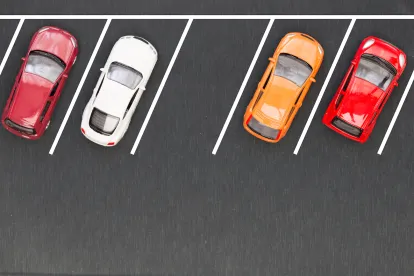With 2019 seeing modest slowdowns in both M&A deal volumes and deal values compared to 2018, industry participants entered 2020 cautiously optimistic about the potential for automotive M&A deal growth. Although 2020 wasn’t predicted to be a breakout year for M&A deals, many saw autonomous and electrification technologies driving industry activity as consumers continued to warm to the thought of self-driving cars and the idea of replacing gas stations with charging stations. In the background, consolidation of suppliers and producers in the internal combustion engine sector were likely to continue driving underlying activity in 2020 and for years to come.
As 2020 turned out, the COVID-19 pandemic had a dramatic impact on M&A activity generally, with a disproportionate impact on the automotive sector as communities around the world closed down, OEM plants and auto dealers were shut down, and consumers were forced to stay home. With the Great Recession still fresh in the minds of many in the automotive industry, companies took dramatic action early on in the pandemic, drawing on credit facilities and shoring up weak balance sheets as strong players prepared for distressed M&A opportunities among the expected bankruptcies within their supply chain and competitive base. Many deals paused during the first half of the year as COVID-19 weighed down markets around the globe, lockdowns were eased and businesses started to reopen operations. However, M&A activity in the automotive sector saw explosive growth in the second half of 2020, though it remained tempered by the possibility of COVID-19 surging back. Surprisingly to many, lenders were far more accommodating of borrowers than they were during the Great Recession, helping troubled companies stay afloat with the assistance of CARES Act programs, including the PPP. As a result, the tsunami of distressed M&A and bankruptcies remained far below expectations. Going forward, many industry participants are wary of lenders’ willingness to accommodate continued financial difficulty through 2021, and many worry the distressed company wave may have just been delayed, not avoided.
As 2020 came to a close, with a new administration entering the White House and the light appearing (though a bit dimly) at the end of the COVID-19 tunnel via the vaccines coming online, deal makers were taking a cautiously optimistic look to a new year of M&A activity in the automotive sector.
2020 Was a Year No One Expected
The COVID-19 pandemic was a leading factor in the decline of both automotive M&A deal values and volumes in 2020 compared to 2019, dropping 32% and 18%, respectively, according to PwC. Similarly, M&A activity as a whole saw declines in both aggregate value and volumes, with total deals falling 8% and aggregate values declining 7% compared to 2019, according to estimates from Refinitiv. That said, 2020 still saw almost 45,000 announced M&A deals with an aggregate value exceeding $3.4 trillion, while the automotive sector saw over 620 deals with an aggregate deal volume of over $41.3 billion.
With a soft first half of 2020, dealmakers assessed the economic impact of COVID-19 and entered the second half ready to take advantage of improved cash reserves, cheap costs of capital, and new methods of conducting acquisitions. While global M&A saw a nearly 40% decline in deal value in the first half of the year, values swiftly recovered in the second half of 2020, to end the year with values down only 7% compared to 2019. Similarly, the third quarter saw over $23 billion in deal value in the automotive sector alone, but fourth quarter activity slowed as uncertainty about COVID-19 and the presidential election weighed heavily on the minds of dealmakers.
A bounce back in third quarter activity was largely driven by the emergence of special purpose acquisition companies (“SPAC”) as a preferred method for private companies to access the public capital markets. In the automotive sector, the use of SPACs heavily favored the automated, connected, electric and sharing (“ACES”) automotive technologies and business models through the end of 2020. Automotive companies such as Nikola, Ouster, Arrival, Electric Last Mile Solutions, Fisker, Lordstown Motors, Canoo, and XL Fleet Corp led the way with SPAC transactions in 2020, accounting for over $6 billion raised. Without accounting for industry, SPACs accounted for $74 billion in M&A activity, with traditional IPOs accounting for $218 billion in deal value. Over 242 SPAC entities were listed in 2020, four times the amount introduced in 2019, with an average size of $335 million, nearly 10 times the value of the average SPAC value listed in 2019.
Many industry analysts predict SPACs to accelerate further M&A activity in 2021 and beyond, largely driven by the transition to 100% electrification and the expectation that this transition will cost over $2.5 trillion and that the push towards automation will cost even more. Traditional M&A activity did not sit on the sidelines unabated in 2020, accounting for the overwhelming majority of transactions compared to SPACs. Even in the face of economic headwinds and COVID-19’s impact on automotive sales, megadeals still occurred with Intel’s Mobileye unit acquiring Moovit for $900 million, Amazon spending $1.2 billion to acquire Zoox, Uber acquiring Postmates for $2.6 billion, BorgWarner purchasing Delphi Technologies for $3.3 billion, and Volkswagen’s heavy truck unit Traton acquiring Navistar for $3.7 billion.
Although large-cap and megadeals stole the headlines for automotive M&A in 2020, middle-market deals continued to move in step with the rest of the industry. While middle-market deals suffered through the first half of 2020, as economies emerged from lockdowns entering the third quarter, so did middle-market dealmakers. While financial buyers proved to take the lion’s share of transactions in 2020, accounting for all deals in the second quarter alone, strategic buyers reentered the market in the third quarter. Total middle-market deal volumes for the third quarter exceeded $664 million through 97 transactions, compared to $543 million and 158 deals in the first half of 2020, with auto dealership transactions accounting for the majority of deals throughout the year as traditional dealers continued a trend of consolidating.1
Electrification and Autonomous Continue to Drive Excitement
The push towards electrification and automation continued to drive M&A activity for the automotive industry in 2020, and is only expected to accelerate going forward. No longer the new kid on the block, Tesla’s emergence as one of the leaders in automotive innovation and marketing (capped off by its addition to the S&P 500 late in 2020) continues to capture the hearts and minds of consumers and dealmakers alike. Hoping to replicate the success of Tesla, in both product adoption and valuation explosion, traditional automotive manufacturers and new market entrants are looking to capture the next Tesla through a rapid series of acquisitions and partnerships in 2021.
Riding the coattails of Tesla’s success, the anxiety over electric battery charging and computers navigating our vehicles down the roadways slowly dissipated in 2020, and this trend will likely continue throughout 2021. But it hasn’t just been the success of Tesla, whose market cap at one point in 2020 was higher than the seven largest automakers combined at the start of the year, which has driven the adoption of EVs and the excitement of dealmakers for this space. A combination of stricter regulations against gas-powered vehicles, the expected environmentally focused agenda of the Biden administration, including fossil fuel elimination, a growing comfort for plug-in vehicle purchases, drastic improvements in technology, and the benefits of scale, have led more consumers to embrace electric vehicles and provided dealmakers with a better business case for entering the EV space.
Not wanting to miss the EV boat, traditional OEMs realize the growth of EV is still a long and difficult road, but one they cannot simply sit back and watch pass them by. Encumbered by the image of being legacy manufacturers, many traditional OEMs are seeing their own market valuations depressed compared to more recently listed public companies like Tesla and Nio, each of which see a per-vehicle market valuation of $1.1 million and $1.6 million, respectively, compared to GM and Volkswagen, whose per-vehicle market valuations are $9,000 and $10,000, respectively. While this is easily explainable by the drastic difference in vehicle sales between the legacy OEMs and new entrants, it demonstrates the upsized valuations investors are putting on EV-focused companies even when vehicle deliveries and operating fundamentals would not begin to justify such valuations.
While 2019 might have been the year of the autonomous vehicle, 2020 was the year of electrification, and it might not be turning back to the internal combustion engine any time soon. That said, the development of new technologies and M&A activity in the AV space continued to move forward in 2020. While Tesla has largely focused on a camera-based AV technology platform, LIDAR has been championed by players such as Aurora and has been the technology of choice for recent 2020 SPAC-merger companies Velodyne, Luminar, Aeva, Innoviz, and Ouster. Although industry participants are starting to realize the road to full automation might be longer than the road to full electric vehicles, development continues to push ahead in conjunction with smart city projects around the globe.
2021 - A Year of Cautious Optimism
As the world enters 2021, dealmakers have been looking forward with a gaze of cautious optimism. Even with the COVID-19 vaccine beginning to roll out, many dealmakers have tempered their optimism surrounded by a resurgence in COVID-19 cases and civil unrest throughout the United States, including with the transfer of power in Washington, D.C. Coming out of 2020, strong companies managed to shore up their balance sheets and take advantage of access to continued cheap capital and accommodating fiscal policies in the United States and Europe. Having over two quarters to assess the impact of COVID-19, many buyers are on the lookout for potential distressed opportunities at reasonable valuations with highly motivated sellers.
The uncertainty over COVID-19’s continued impact still weighs on the minds of dealmakers as 2021 charges ahead. The change of guard in the White House and President Biden’s first 100 days are certain to be dramatic and full of sweeping changes on multiple fronts, including in environmental, energy, labor and employment and other areas that will dramatically impact the auto industry. With Democrats in control of the presidency, the House, and the Senate, many are expecting the Biden administration to make drastic changes to Trump’s 2017 tax plan as well as expand various environmental restrictions that will have impacts on the automotive sector. These changes are likely to come swiftly and early on in the Biden administration’s first 100 days. The continued shift towards EV is likely to drive consolidation in legacy internal combustion players seeking to drive down costs and expand market share while facing continued pressure to transition to new technology and the expected new world of governmental regulation.
---------------------------------------------------------
1 See Greenwich Capital’s deal studies: https://greenwichgp.com/2020/08/03/q2-2020-automotive-industry-update/




 />i
/>i

